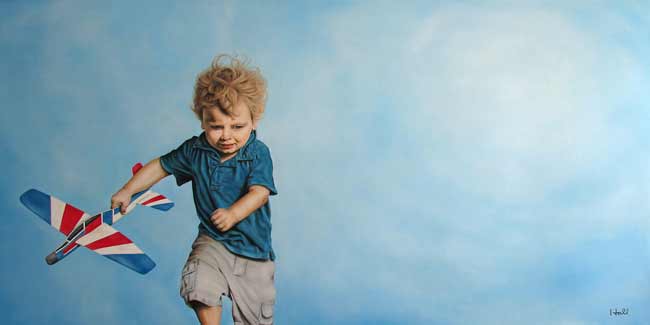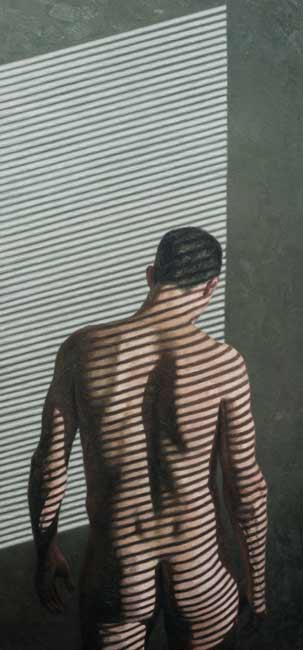Nathan Brad Hall, figurative art is how we view ourselves

As artists, there is a moment when the landscape shifts, and how we see things, how we view ourselves is fundamentally altered.
It can slip away, or it can set you on a new direction, one that not only offers a truer understanding of self, but of purpose.
I was fortunate enough that during an emotional upheaval this moment came, and as the lens that I see the world changed, so did my focus. It was here that I discovered the true notion of intent and what that means to self-expression.
For two years I had the opportunity to study with the Pathwise organization, a leadership program that moves beyond the generic notion of mindfulness into the realm of psychological, physiology, and human awareness. During my tenure, I was continually surprised, delighted and often times discouraged by this new understanding of human nature, and soon it began to effect all aspects of how I approached life and art. Coinciding with this, I began studying once a week with the well-known and talented artist Alyssa Monks, whose teachings and own expression was inline with what I was learning with Pathwise. Ironically, it was because of the former that I sought out Alyssa, and there is not a single aspect of my work and artistic mindset that she has not influenced.

With the support of these great teachers, I learned the power of intrinsic motivation and of intent, allowing your self, and your art, to be seen. In short, to be present to your actions and giving your own perceptions freedom to evolve.
The notion of mindfulness is not new, but it has had a resurgence in the past few years and is part of the current cultural lexicon. As with most trends, it is more spoken about than adhered to, not out of lack of want, but from a lack of understanding. It is something that must be nurtured and flexed, and like any muscle, requires patience to build. And what does this mean for artists? There is enough literature out there on being creative, finding your muse, and the like, but this comes at it from a different angle, it is about the power of truly being present and aware of your choices as you work, and how your own state of being effects that process. As simple as it sounds, it continues to be one of the most advanced concepts I’ve encountered.

The challenge, of course, is when we are able to focus on our art, it is difficult to let go of our own notions of self. The world beyond the studio walls, and the ego that propels us through life, offers endless distractions and doubt. The toil to find the mental clarity, that sought after inner silence where all elements align, is something all artists struggle with. The result makes it easy to confuse impulse, impatience and second-guessing with self-expression.
But what would it look like to be prepared, through diligence and experimentation, so that when the brush hits the canvas, we are free to commit to the mark we make?
This idea of mark making, of that mark being the essence of self expression, is the foundation from which real energy can emerge. We spend a lot of time as painters trying to translate the world around us, both literally and abstractly, and yet all to easily succumb to perfect execution as a barometer for success. This can be said for any artistic pursuit. Take modern dance for example; a dancer can strive to learn choreography perfectly, but it is the way that they and they alone perform a move that breaths life into the piece that transcends replication. Otherwise it may be an impressive technical feat, but the most engaging element is lost.
For painters, to be present for every color choice, every stroke, this is where immortality lies. The intent of the mark on the surface, more than the image or final result, is the truest expression of that moment in time. And imagine a painting built this way, a kaleidoscope of strokes made without ego, with all the struggles and successes laid bare on the canvas. Never again will you have that moment, and yet you have left a piece of yourself for all to see.
Art that is made this way is destined to connect. It is the intent behind every mark that begins to reveal the mystery of the work, whether it’s a hundred strokes or ten thousand, a single layer or many, and offers the opportunity for the audience to be drawn into not only the painting, but the artist’s own unique perspective and nature.
Nathan Brad Hall
Nov 5, 2016
